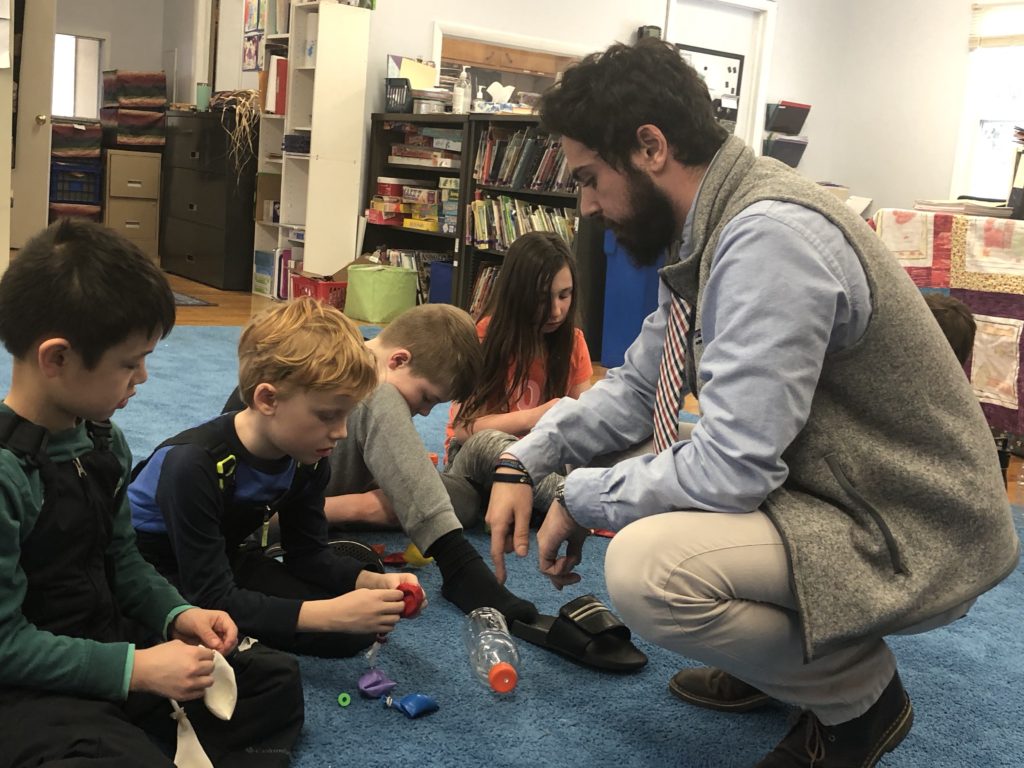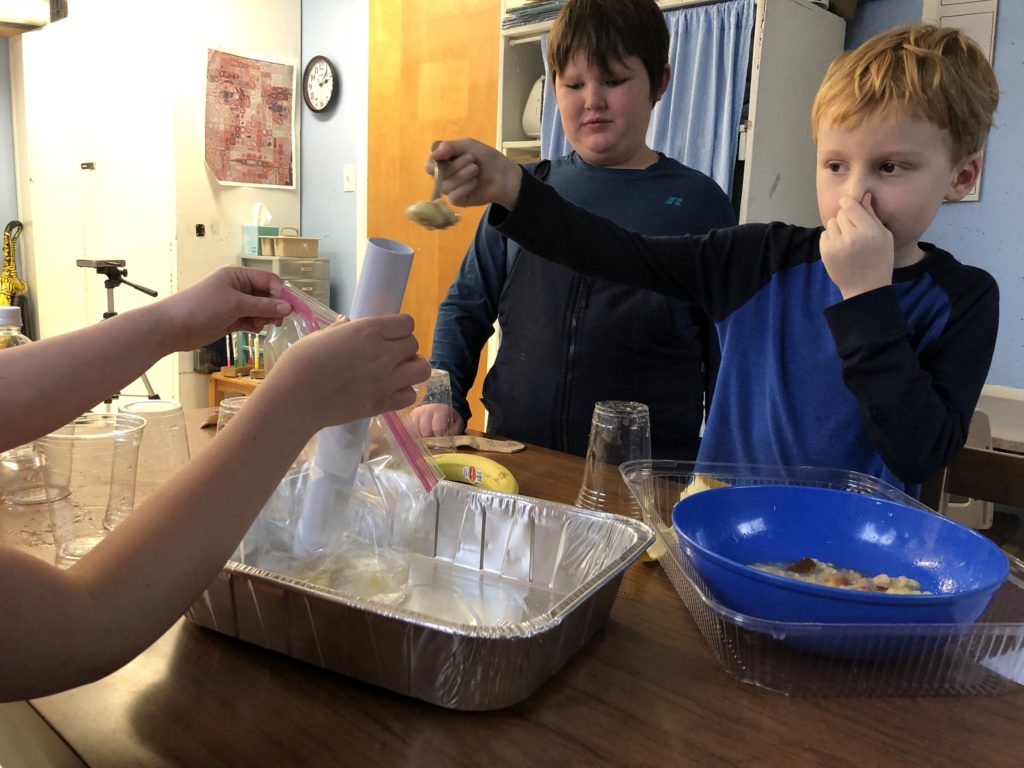 Students have been studying the fascinating systems within the human body that help us perform our daily functions. Our 3rdand 4thgrade students started with studying the human brain and how it is composed of several different parts that each control a specific task within the body. Stations were created to stimulate different parts of the brain such as motor skills challenges (Cerebellum), guessing objects through the use of feel (Partial Lobe) and optical illusions (Occipital Lobe). Studying the brain served as a stepping stone to outline how the human body like the brain uses multiple organs to perform a major role within the human body.
Students have been studying the fascinating systems within the human body that help us perform our daily functions. Our 3rdand 4thgrade students started with studying the human brain and how it is composed of several different parts that each control a specific task within the body. Stations were created to stimulate different parts of the brain such as motor skills challenges (Cerebellum), guessing objects through the use of feel (Partial Lobe) and optical illusions (Occipital Lobe). Studying the brain served as a stepping stone to outline how the human body like the brain uses multiple organs to perform a major role within the human body.
Next students began to study their first organ system, by creating a model of the digestive system! Students worked within groups to “digest” wheat bread and banana by: 1. Crushing the food with plastic cups and adding water, simulating saliva and the teeth 2. Pouring the new mixture into a plastic tube, simulating the esophagus 3. Adding the mixture to a plastic bag filled with vinegar and squeezing the bad, simulating the stomach 4. Pouring that mixture into a stocking and then squeezing it, simulating the small and large intestine. Creating a mess was the next step in building on the sequential order in how a system operates.
Building on the digestive system, students then learned about the respiratory system and created a working model of how the lungs fill with air. Using straws, balloons, rubber bands, and plastic water bottles students were able to create their own working model of the diaphragm adjusting the air pressure in the bottle to fill the balloons. Hands on experience in representing the flow of oxygen going in the body and carbon dioxide leaving the body. Students were able to grow their understanding not only of a new system but also of the beginning of how systems work together within the body.
Students then interacted with a heart “pump” model and learned about the circulatory system. How the heart is separated like the brain into different components in order to send blood throughout the body. How the veins, arteries, and capillaries transport blood through an intricate system to needed areas of the body. Mainly how the circulatory system takes nutrients provided by the digestive system and oxygen from the respiratory system in order to perform its role within the body.
Finally, students began creating their own posters explaining the different systems they have explored. Each student worked with a pair to create their own unique representation of the system. Each poster used an array of colors and materials in creating a diagram of the system along with outlining the function of each organ within that system. The posters were to showcase their understanding of each of the unique systems within the human body.
